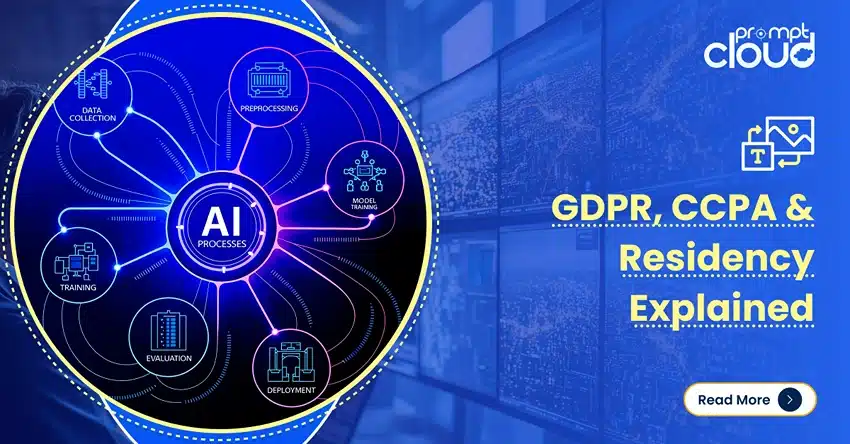
Cyber Security Evolution in today’s world is massively on the rise. Data is an immensely important commodity. Large volumes of free found data and their collection and use have become somewhat of standard practice for businesses to gain insights. A data-driven approach towards important business processes has helped several companies reach the zenith of success. Towards this, the use of practices like web data extraction is becoming an increasingly common feature for the day to day operation of companies. This, of course, has everything to do with data that is available freely and without restriction on the internet.
Proprietary data and cybersecurity
However, it is interesting to note that there is another kind of data-sensitive business data that companies store in-house. Unlike freely available data, this kind of data is classified and often proprietary. Companies can have records of their business transactions, copies of internal communication, details of important business processes and their refinements, and their list of their customers and their details. All this information is something that needs to be protected as any breach of data can bring very serious consequences to the business.
This is what cybersecurity is all about. Having an online presence can make you vulnerable to a slew of different kinds of attacks and attempts at data theft which can compromise your important, classified data. Cybersecurity measures help companies keep this data out of the reach of hackers and those with bad intent. It also helps preserve its integrity and security through the use of several safety measures.
The Need for Cyber Security
Every so often we come across the news of data breaches affecting large corporations, sometimes through attempts to steal sensitive customer information and sometimes by making public intimate internal details of a company’s functioning. With these cases increasing at an alarming rate, the concerns for data security have never been as serious as they are now. A data breach can be devastating to the fortunes of a company, and a large majority of financial advisers share this opinion that cybersecurity should be the top concern for companies. Business owners and their customers also share this opinion and with good reason. As awareness grows, more professionals are pursuing qualifications such as a diploma in cyber security to better understand and combat these threats.
In this day and age, with technology advancing as fast that it is, it can be very difficult to correctly address the problem of cybersecurity. While data protection technology has become more advanced and harder to breach over time, the tools and techniques of data thieves have also become more effective. The best way to protect data from being subject to this kind of vulnerability is to lock the door and prevent breaches from ever occurring. There are many ways for data thieves to obtain sensitive data. Common techniques include the use of cracking down weak passwords by using brute force attacks and to use these passwords to log in to private business systems. A potential attacker could also come across some vulnerability in the code of your business backend, and use that vulnerability to their advantage. These are common techniques that have been in use for a long time.
Prevention is not everything
For many, the right way to improve and enhance the efficiency of cybersecurity is to cut off all routes to the information at hand. Many think that using a more secure backend which has very little in terms of vulnerabilities and training employees and customers to effectively keep their credentials secure can be a good way of achieving better results. While these can effectively be a slowdown for data thieves, this is not a good enough solution.
Companies can have hundreds of employees and thousands of customers, and training them does not ensure the complete participation of every single one of them. No matter how much you advocate the regular changing of passwords and the use of strong passwords, a few people are still going to use weak passwords. It would only take one entry point of weakness for data thieves to get at your data.
Data encryption, which is one of the most regularly used tools for threat management, has advanced in leaps and bounds over the years. The problem lies in the fact that with each advance in protection systems, potential attackers can come up with a way to circumnavigate the wall that is being erected.
Any notion of safety resulting from the deployment of a new data protection method can create barriers for potential data thieves, but it is a temporary barrier and would eventually be conquered in the long run. For this reason, preventing breaches alone is never a good enough technique to reduce the possibility of attacks. There must be a new twist to the cybersecurity dilemma which brings us closer to a more thorough, effective solution.
Behavior Recognition in Cyber Security
This is where the concept of behavior recognition comes in. Every user has a set pattern of behavior once inside your system, and studying this behavior can be a great way of deciding whether a particular account has been taken over by individuals with malicious intent. For example, when a customer enters your business site, there is usually a certain pattern of mouse clicks, cursor travel, and typing speed. This kind of behavior can be logged and attributed to that particular user. For any subsequent logins, the pattern of behavior displayed by the user can then be compared to the prototype stores in the system and analyzed for marked differences, being an accurate indicator for a breach.
Behavior pattern recognition is slowly but steadily becoming one of the main pillars of cybersecurity and certainly looks poised to the logical next step in the evolution of security systems of the future. By logging small online behavior patterns and creating a user profile, several threats like account takeovers, malware attacks, and remote access attacks can successfully be prevented by freezing access to a particular account when it displays a large shift from the usual user behavior logged in the system. By mapping disparate components of the online usage of every user, accurate profiles can be created which can be then used to compare against in case of further logins. Any serious deviation from the usual usage pattern can be considered to be a possible takeover, and the system can then demand further security information from the user, acting as a deterrent to further abuse of the system.
Continued Integration and Utility
While many companies are focused on developing user behavior profiles and security measures based on them, there are many other avenues of implementing behavior pattern recognition into cybersecurity systems that are also being actively explored currently. For example, some security solutions are using a combination of steps to achieve stellar results. These use simple wearable devices as a biometric signature to announce to systems that they are being accessed by their intended users. Implementation of biometric technology to behavior recognition can bring an added layer of security, effectively lessening vulnerability by a large amount.
These additions to cybersecurity are important as they can prevent actual damage from being done without having to put any large demand on the average user. Users can just keep using their accounts as they normally do, and that can provide enough ammunition to take down hacking attempts the moment they are detected. In addition to more convention entry barrier approaches to cybersecurity, these measures employ a more direct, hands-on approach of bringing about the identification of misuse, to create a double layer of protection. Hackers might eventually find ways to breach through traditional modes of data security like encryption and password protection. But being able to mimic exactly the behavior of another user is an impossible proposition, and that is where the success of this approach stems from.
The Future
The future of cybersecurity looks bright with the infusion of much-needed hope that the implementation of behavior recognition systems brings. While these techniques are still in the process of being perfected, companies have already started getting great results and it might well be believed that this approach will be the key to the transformation that was much needed in the realm of cybersecurity. With time, we can hope to see higher levels of behavior recognition technology including social behavior recognition and perhaps a more data-driven approach to collecting snippets about users’ behavioral patterns and implementing those patterns into this system of behavior-based security.
Business owners and customers will agree that this approach is effective, simply because it can produce results without making demands of online system users. With the right development and enhancement, behavior recognition can prove to be the previously missing ingredient that takes cybersecurity to new heights of effectiveness. Overall, it has proven itself as an integral part of the evolution of cybersecurity technology and is well set to become one of the prime pillars of data security in the coming years, providing businesses with a little extra peace of mind.





















